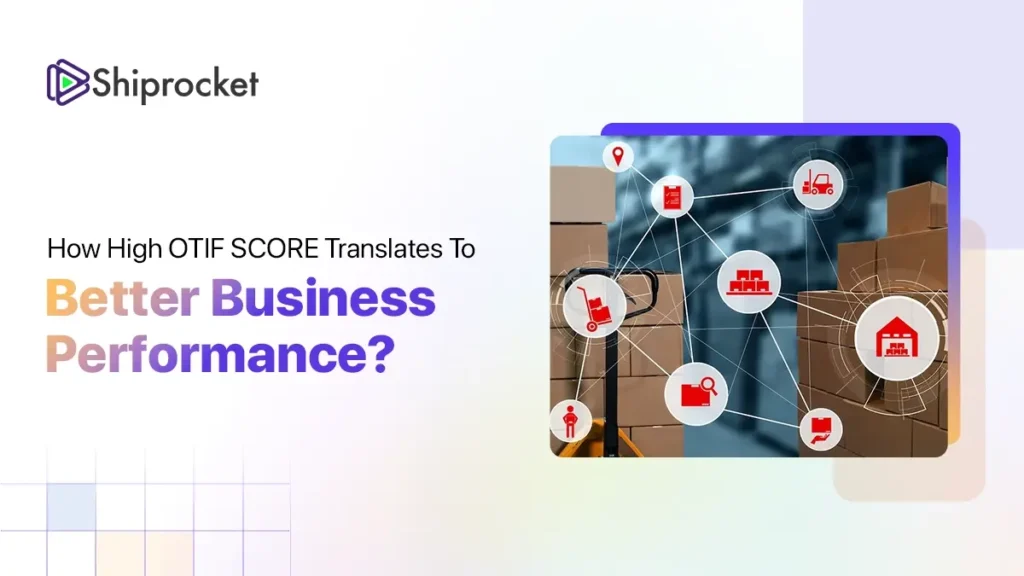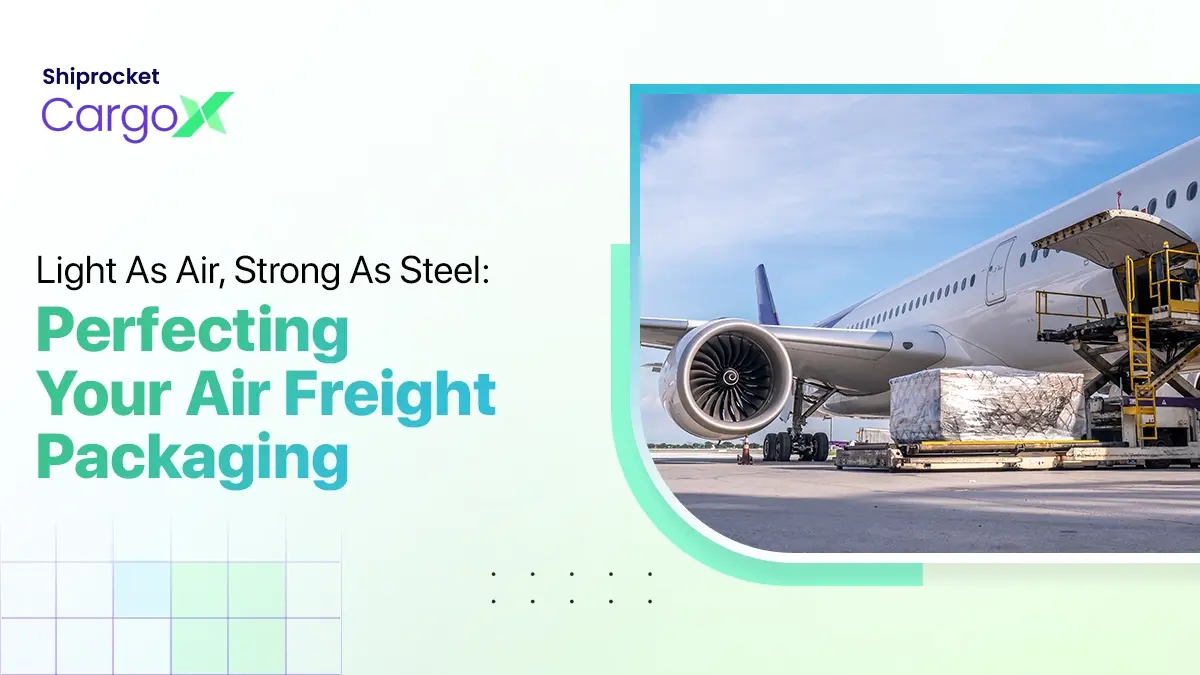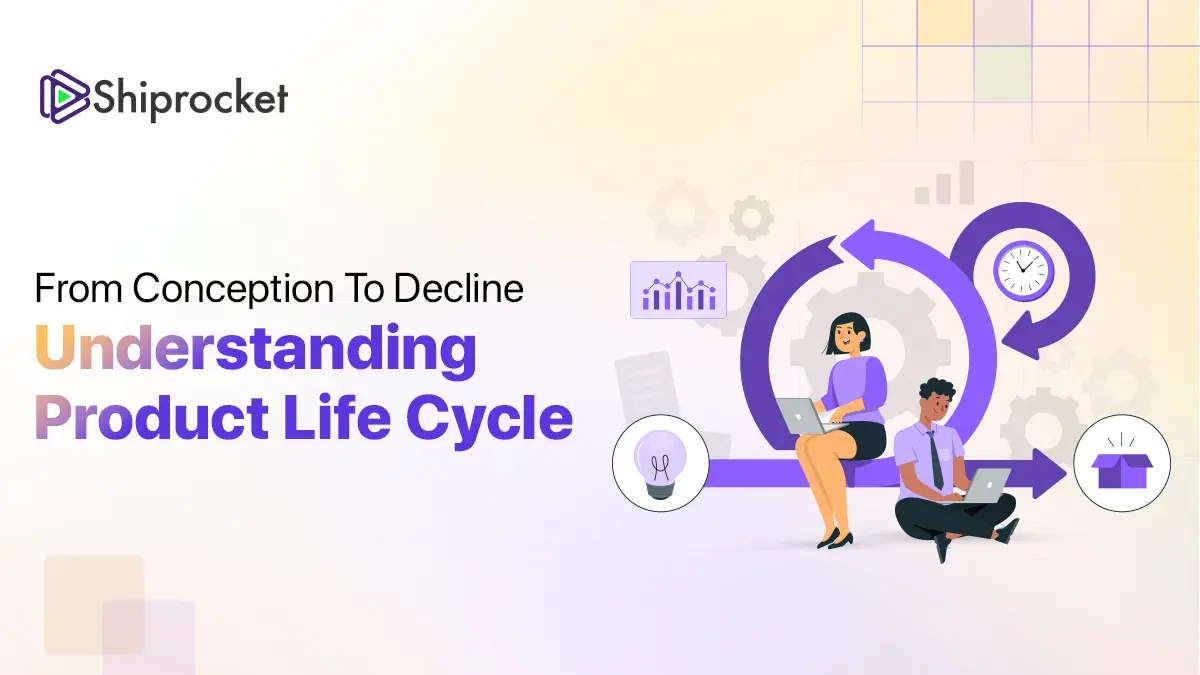On Time In Full (OTIF): A Key Metric for Ecommerce Success
- Definition and Full Form of OTIF
- Significance of OTIF in the Context of eCommerce Logistics
- Exploring the Broader Implications of OTIF Beyond Logistics
- How does OTIF Affect Customer Satisfaction and Brand Reputation?
- Step-by-Step Guide on How to Calculate OTIF
- When is it Appropriate to Use OTIF as a KPI?
- Practical Tips and Techniques for Enhancing On Time and In Full Performance
- Tips for Implementing OTIF Best Practices in Self-Managed Logistics
- Conclusion
OTIF, On Time In Full, is a metric used to assess performance in the logistics industry. The importance of this performance metrics has grown over the years as many big organisations have started using it to gauge their performance. OTIF has gained special significance in eCommerce logistics. Companies are using it as a key performance indicator (KPI) to increase employee productivity and deliver satisfactory services to their customers.
In this article, we have shared how to calculate OTIF, its importance in the supply chain, tips to enhance it, its implications beyond logistics, and more. You will develop a clear understanding of the on time in full concept by the time you finish reading this article. So, let’s get started!

Definition and Full Form of OTIF
OTIF is calculated to determine the ability of a supplier to deliver products within the committed timeframe and in full quantities as per the order. The concept was floated in 2017 with the aim of increasing the efficiency of the suppliers. Walmart was among the first companies to levy fines on the suppliers who failed to deliver their products on time or did not deliver the complete orders as per commitment. OTIF has become a means to assess the supply chain performance ever since. In addition to ensuring timely deliveries, it helps improve overall store operations by optimising inventory planning and order fulfillment process. OTIF is being used as a KPI to assess the performance of the supply chain model.
Significance of OTIF in the Context of eCommerce Logistics
One of the challenges eCommerce businesses face is choosing the right shipping partners to ensure safe and timely deliveries. On time in full has gained special significance in the context of eCommerce logistics as it helps businesses assess and improve the efficiency of their delivery process. It helps gauge the performance of their shipping partners by determining whether processes such as picking, packing, and shipping are being carried out in a timely and efficient manner. The performance at all these stages impacts the final delivery. OTIF helps identify which step in the supply chain needs improvement and thus helps eCommerce stores gain greater control of the process. With this information, they can plan better and handle the issues that may be arising at different stages to ensure timely deliveries. eCommerce businesses are advised to maintain an OTIF rate ranging between 80%-90%.
Exploring the Broader Implications of OTIF Beyond Logistics
While OTIF is mostly known in the context of logistics, it has a bigger role to play for businesses. As organisations enhance their supply chain process by enhancing their OTIF rates, they witness improvements in various aspects of the business. One of the broader implications of OTIF is cost savings. How? Well, as it optimises the delivery process and maximises the number of timely deliveries, businesses do not require shelling expedited shipping fees. Timely deliveries also help to improve the overall customer experience. It has been observed that stores that provide timely deliveries stand a high chance of repeat purchases. Research shows that 55% of consumers prefer shopping with brands that offer fast and timely deliveries.
How does OTIF Affect Customer Satisfaction and Brand Reputation?
OTIF measures the performance of the suppliers and the efficiency of the supply chain process. Companies penalise the suppliers if they aren’t able to deliver the orders on time and in full. To avoid incurring penalties and losing clients, suppliers strive to enhance their performance. They aim for secure and on time deliveries and ensure that the accurate quantity of goods reaches the customers. Customers appreciate timely deliveries. Correct and timely delivery of products is directly linked to customer satisfaction.
OTIF also impacts the brand reputation in a positive manner. Happy and satisfied customers often spread good word about the brand. They recommend such brands to their family and friends. These days many people even take to social media to write positive reviews about the brands. Thus, it helps in word-of-mouth publicity and strengthens the brand’s reputation.
Step-by-Step Guide on How to Calculate OTIF
OTIF can be calculated using a simple formula. Here is a look at how you can make this calculation:
For this, divide the number of orders that are delivered on time and in full by the total number of orders. Thereafter, multiply the derived answer by 100 to get the OTIF percentage. Here’s the formula:
- OTIF% = (Number of on time in full orders/total number of orders) * 100
Let us understand this better with the help of an example:
For instance, you have shipped a total of 1,000 orders in a particular week. Out of these, you were able to deliver 840 orders on time and in full and the rest could not be delivered as per commitment. Here is how you will calculate its OTIF rate:
OTIF% = (840/1000)*100
= 84%
This means that your OTIF score is 84%
Importance of Accurate Measurement in Assessing Performance
It is important to calculate the OTIF rate accurately to assess the supplier’s performance properly. Only when you have the right figures, you will be able to understand the scope of improvement and prepare a plan to enhance the performance. The amount of penalty to be levied also depends on the OTIF calculation. Thus, even a slight mistake in computation can lead to wrong calculations moving forward.
OTIF measurement goes beyond assessing the supplier’s or shipping carrier’s performance. Low OTIF rates indicate a lack of planning at various stages in the supply chain process, poor management practices, and outdated warehousing practices among others. Its accurate measurement is thus important to assess performance at various levels.
When is it Appropriate to Use OTIF as a KPI?
If you are facing the following challenges then it is time to use OTIF as a KPI:
- Delay in Deliveries
If you are facing the issue of delayed deliveries, then using OTIF as a KPI can be helpful for you. As stated above, organisations are improving their delivery processes with this concept. It will help identify where the problem lies and give you a chance to speed up your deliveries
- Incorrect Deliveries
If your customers are complaining about inaccurate delivery of products then again you should use OTIF as a KPI. Complaints may include receiving a lesser number of items compared to those ordered or receiving an incorrect size, wrong colour, or a different item altogether. This usually reflects a lack on the part of your warehouse staff.
- Issues in Warehouse Processing
Another indication that it is time to use OTIF as a KPI is if you see issues in warehouse processing. This can delay the order fulfillment process and cause dissatisfaction among customers.
Practical Tips and Techniques for Enhancing On Time and In Full Performance
Here are some tips to enhance on time in full score:
- Employ Latest Warehouse Management System
To improve your OTIF rate, you must make use of an advanced warehouse management system and the latest order-tracking software. This will help streamline tasks such as order processing, picking, tracking, and reporting, thereby increasing efficiency at various levels.
- Collaborate with Reliable Vendors
Look for trusted names when it comes to choosing suppliers and shipping carriers and communicate effectively with them.
- Ensure Efficient Demand Forecasting
Efficient demand forecasting and inventory optimisation help in maintaining appropriate inventory levels that help in timely and efficient deliveries. It is suggested to invest in trusted demand forecasting tools for accurate predictions.
- Efficient Planning of Route
Advanced route planning software helps identify delivery routes that demand lesser transit time and reduce the overall transportation cost. It is highly recommended to invest in the same to enhance your OTIF score.
Tips for Implementing OTIF Best Practices in Self-Managed Logistics
Here are some OTIF best practices you can adopt in self-managed logistics:
- Identify Sources of Delay – Delay may be caused at any level in the supply chain process. It may occur while boarding the goods from your warehouse, at your distribution centers, or at your shipping carrier’s end. To achieve a high OTIF rate, it is important to monitor different levels and identify where the delay is occurring. Find out the reason for these delays and address the issues timely. If the issue occurs regularly, then identify the root cause and work on improving that area.
- Leverage Automation – Make use of advanced software and tools to enhance your OTIF score. These tools reduce the scope of human error, enhance efficiency, and increase delivery speed.
- Notify Your Customers – In case you notice a delay in delivery, then it is recommended to notify the customer about the same. OTIF cannot be achieved 100% of the time. However, if the customers are informed about the delay and the possible reason for the same, then it may cause less dissatisfaction among them.
Conclusion
OTIF does more than deliver your goods on time and in full. It helps enhance the performance of various logistical activities that have a positive impact on your overall business. It enhances customer satisfaction, builds customer loyalty, boosts sales, reduces business expenditures, and increases profit margins. To maintain a good OTIF score, you must employ advanced software systems, collaborate with reliable suppliers, and monitor your supply chain activities regularly.





